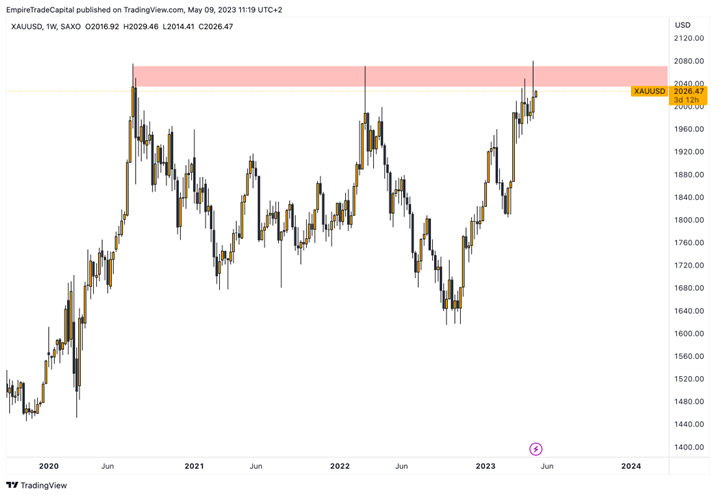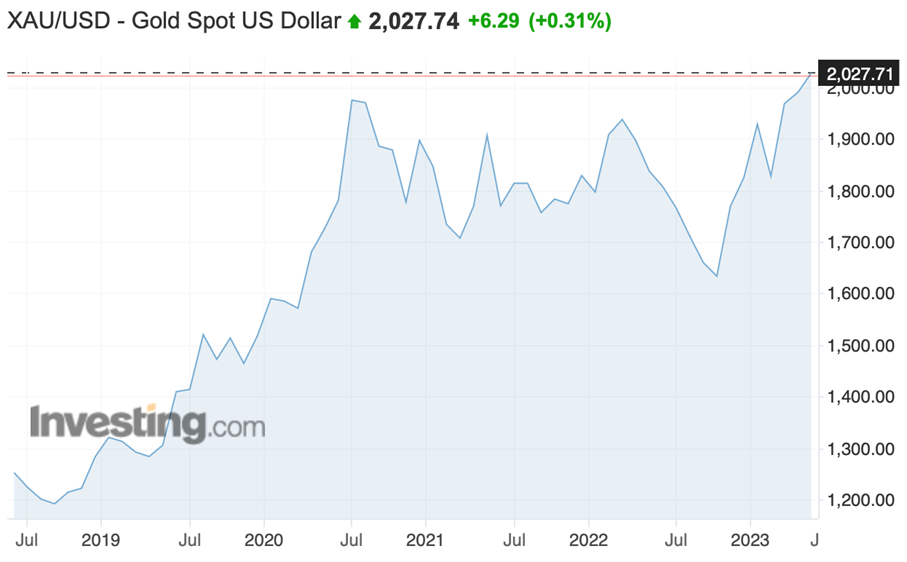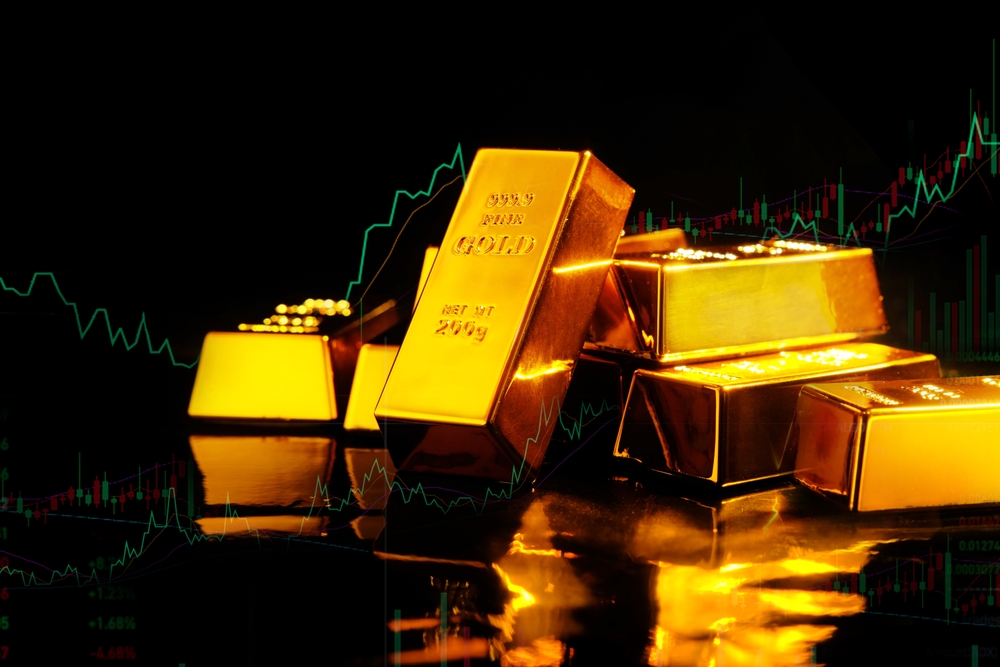For millennia, gold has been seen as a jewel among metals, not only because of its aesthetic value but also because it is one of the oldest and most reliably preserved sources of wealth. This precious metal has become a popular investment commodity and an attraction for many investors and traders. But what about today, in times of uncertainty and volatility in world markets?
Gold's reaction to the Fed's monetary policy stance
Gold has been hovering around key levels in recent days, the so-called all-time highs (the highest prices ever reached.) On Thursday, the price briefly broke above these levels as well, specifically at the price of $2,073.29.* Traders and investors are awaiting the announcement of inflation data, which is due to be released this week. Last Friday, the yellow metal saw a significant drop in price as the report regarding the labour market was more positive than expected.* It was indicated by the Federal Reserve that the view on monetary policy will remain hawkish and hence the main priority will be to keep inflation low in the wake of interest rate hikes.
This past week's news from the Fed tempered market expectations for an eventual pause in the rate hike cycle. This means that any rise in gold is likely to be hampered by the fact that interest rates will continue to remain at higher levels [1].
The banking crisis is still "in play!"
Demand for gold as a safe haven has also receded in recent sessions as fears of a looming banking crisis in the U.S. have eased following the Federal Reserve's survey on lending conditions. The survey showed that the recent failure of several banks did not have as drastic an impact on credit conditions as expected.
The price outlook for the near term
Although the value of gold broke out to higher levels, it failed to close there in terms of the weekly timeframe and fell just before the end of the trading week. * This phenomenon is regularly repeated in the markets and has the effect of creating a "trap" for retail traders who want to sell at a relatively high price. Before the next potential price increase, gold may fall correctively for some time to the 1970$ level. Should the strength of the Fed's hawkish policy increase, the gold price may test much lower levels - $1,934 to $1,870.2.
The market is currently focusing mainly on the US Consumer Price Index data, which will be released on Wednesday. Although inflation is expected to have eased slightly in April from the previous month, it is still expected to remain well above the Fed's annual target range, which may trigger the aforementioned hawkish central bank reaction to the data [3].

Chart 1 Gold price development on a weekly time frame *
Data on Fed Fund futures prices show that markets are pricing in an 88% chance that the Fed will leave its current rates in place in June. However, markets have downgraded their expectations for a possible rate cut this year given that the Fed has largely downplayed the possibility of such a scenario.

Chart 2 Spot gold price development over five years *
Conclusion
The gold price has been hovering around all-time highs recently, with investors awaiting the release of inflation data due this week. * The Federal Reserve's hawkish stance on monetary policy has dampened expectations of a pause in the rate hike cycle, which may continue to limit the upside for the gold price. Meanwhile, demand for gold as a safe haven has fallen as fears of a possible banking crisis in the US have eased following a Federal Reserve survey which showed that recent bank failures have not had as much of an impact on lending conditions as had been expected. In the short term, the gold price may fall to around $1,970 and then potentially rise again depending on the strength of the Fed's hawkish policy and inflation data to be released this week [4].
* Past performance is no guarantee of future results
[1,2,3,4] Forward-looking statements are based on assumptions and current expectations, which may be inaccurate, or on the current economic environment, which may change. Such statements are not guarantees of future performance. They involve risks and other uncertainties that are difficult to predict. Results may differ materially from those expressed or implied by any forward-looking statements.


